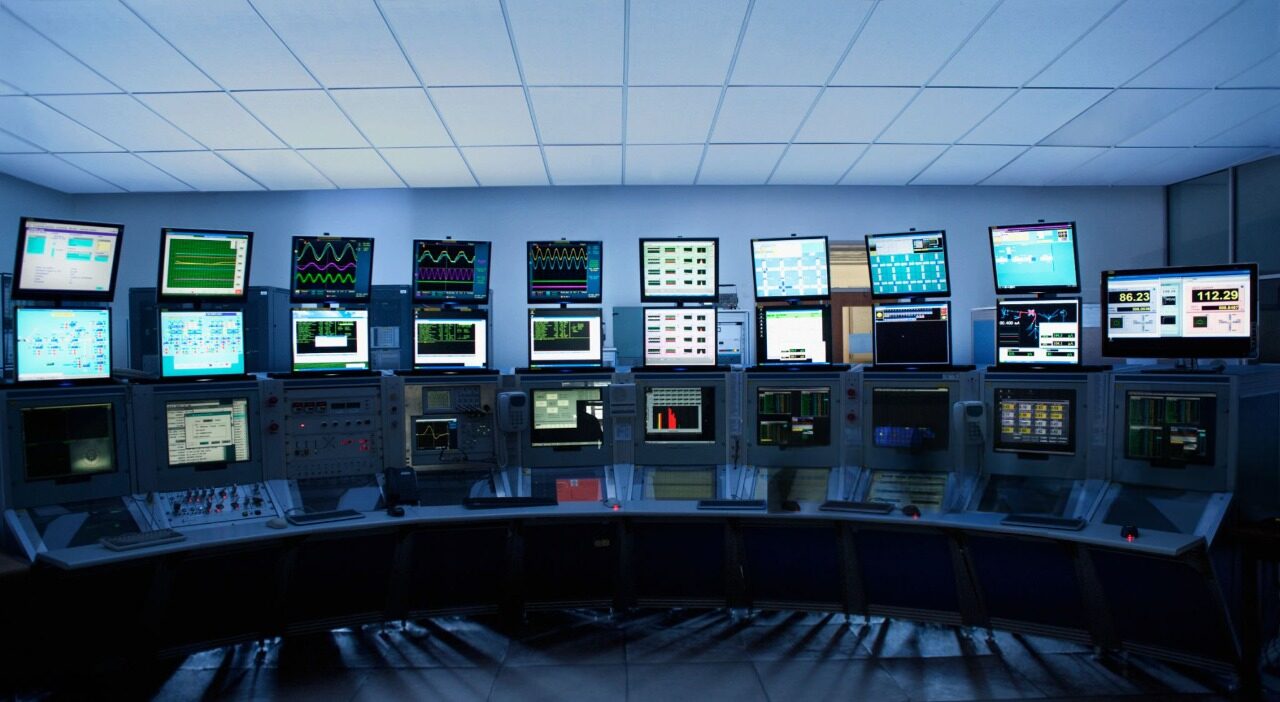Reduce Risk, Enhance Predictive Maintenance and Optimize Outage Management by Combining IT and OT
The business of utility operations has dramatically changed in the last decade. Managing grid operations, integrating distributed energy resources and ensuring affordable service involves making sense of massive data so business leaders, operational staff and field crews can operate more effectively.
That’s why modernization matters more today than ever. When utilities digitally transform large-scale control systems and operations through software integrations, they do more than keep up with technology; they fundamentally reduce risk across multiple fronts – from outages and cybersecurity to efficiency and response times.
Transformation requires utility businesses to embrace cutting-edge operational technologies and information systems—and understand how to connect and optimize these systems to improve reliability.
Utilities Need Modern Control Rooms
Utilities in the U.S. and worldwide grapple with challenges that underscore the need for modernized control room systems. The rapid integration of renewable energy sources, both at the utility-scale and more local systems, particularly wind and solar, has introduced unprecedented grid variability. This shift towards a more distributed energy landscape demands real-time monitoring and control capabilities that traditional systems struggle to provide.
Other challenges include:
- Extreme weather that strains grid resilience and lowers reliability
- Cybersecurity attacks which require advanced detection and response
- Carbon reduction goals that push utilities to optimize
- Aging utility sector workforces that need systems to capture institutional knowledge for digitally native employees
Collectively, these challenges point to the need for a new generation of control systems—and modern control rooms—that provide real-time insights, facilitate rapid decision-making and enable proactive grid management. Modern control room systems, especially operating in a connected fashion, enable more precise asset management and energy flow control. Utilities can improve operational performance by implementing and integrating enterprise systems that work from the back office to the field to create a seamless, cohesive digital ecosystem available to multiple departments and users.
The Modern Control Room: Integrating OT and IT
A modern control room system represents a convergence of advanced operational technology (OT) and information technology (IT). It involves creating a robust digital enterprise that enables utilities to monitor, analyze and control networks with unprecedented precision and efficiency.
The bulk power system relies on energy management systems (EMS), incorporating SCADA for real-time monitoring and control. Meanwhile, distribution systems typically use advanced distribution management systems (ADMS), which function as a distribution SCADA and an outage management system, offering tools for network modeling, outage management and voltage optimization.
ADMS also empowers operators with automated fault detection and restoration capabilities, leading to faster outage response times and more efficient grid management. In addition, ADMS facilitates the integration and orchestration of distributed energy resources, allowing utilities to effectively manage the complexities of modern grids with high penetrations of renewables and optimize overall system performance.
Modern control rooms incorporate meter data management systems (MDMS) and IoT platforms to handle the influx of data from smart meters and IoT devices. They process and analyze vast amounts of data, providing actionable insights for operational decision-making.
Modern GIS software, such as the Esri ArcGIS Utility Network, integrates seamlessly with these platforms. It supplies real-time situational awareness through interactive maps that display critical information such as asset locations, alarm conditions and technician positions. It enables dispatchers to visualize and analyze spatial data, facilitating faster decision-making and more efficient resource allocation during emergencies or routine operations. Additionally, GIS integration in control rooms supports improved communication and coordination by offering a shared operational picture that all stakeholders can easily understand and act upon.
These systems work in concert to address key utility challenges. For instance, at the distribution level during a storm event, the ADMS can quickly identify affected areas based on the information coming from interactive voice response systems (IVR) and AMI. It enables remote switching to isolate faults. Meanwhile, the MDMS and IoT platforms provide real-time consumption data, allowing for precise load balancing and restoration prioritization.
In addition, modern control rooms require advanced cybersecurity software with sophisticated intrusion detection systems to protect against cyber threats.
By integrating these technologies, utilities gain a holistic operational view, enabling them to respond more quickly to outages, optimize resource allocation and enhance grid reliability and efficiency. Moreover, it improves decision making with real-time analytics.
Superior Capabilities Through Modern Control Room Systems
Modern control room systems empower utility operators with advanced capabilities. Real-time situational awareness becomes a reality, with operators able to visualize the entire grid’s status at a glance, including equipment health and potential issues. This comprehensive view enables proactive decision-making and rapid response to emerging problems.
Predictive analytics and machine learning algorithms provide foresight into potential equipment failures or network stress points, allowing for preventive maintenance and reducing the likelihood of outages. Advanced demand response and load management features help utilities balance supply and demand, particularly in grids with high penetration of renewable energy sources.
These advanced capabilities also facilitate better integration of distributed energy resources (DERs), allowing utilities to monitor and control various generation sources and energy storage systems. This capability is crucial for maintaining grid resiliency and optimizing energy flow.
The implementation of modern control room systems opens a world of possibilities for improving utility workflows, including:
- Real-time outage management and rapid service restoration
- Predictive maintenance and asset health monitoring
- Integrated renewable energy and DER management
- Advanced demand response and load balancing
- Cybersecurity threat detection and mitigation
- Volt/VAR optimization for improved power quality
- Automated fault location, isolation and service restoration (FLISR)
- Dynamic network reconfiguration for optimal power flow
- Enhanced storm response and damage assessment
- Improved customer communication and engagement during outages
Three Simple Steps to Get Started
Knowing where to begin may seem challenging for utilities looking to transform control room operations digitally. The three simple steps below provide a foundation for modernization success and give companies a framework for maximizing enterprise software value.
- Conduct a detailed needs assessment. Before starting a modernization journey, utilities should thoroughly evaluate their existing infrastructure, operational pain points, and long-term strategic goals. This assessment will help identify the most critical areas for improvement and ensure that the new systems align with the utility’s overall objectives.
- Prioritize interoperability and scalability. When choosing new control room technologies, it’s crucial to prioritize solutions that can easily integrate with existing systems and accommodate future expansions. Look for open standards and APIs facilitating seamless data exchange between platforms, ensuring a flexible and future-proof infrastructure.
- Invest in workforce training and change management. The success of any modernization effort hinges on the ability of the workforce to use new technologies effectively. Develop comprehensive training programs that cover technical skills and new operational processes. Implement a robust change management strategy to address cultural shifts and ensure buy-in from all levels of the organization.
Take the Pain Out of Control Room Modernization with TRC
With over 50 years of experience in power delivery engineering and 30+ years in advanced energy program design, TRC offers clients deep utility operations knowledge combined with cutting-edge IT/OT expertise. This includes end-to-end control room consulting and integration solutions, ensuring seamless implementation and optimization of real-time systems.
Taking a holistic approach, our practitioners design client-specific, mission-based solutions using tested and proven delivery best practices. In addition, strategic partnerships with leading technology vendors allow us to offer best-in-class solutions while maintaining vendor neutrality. This approach ensures clients receive tailored, practical solutions for their needs. For more information, view related services or contact us today.





